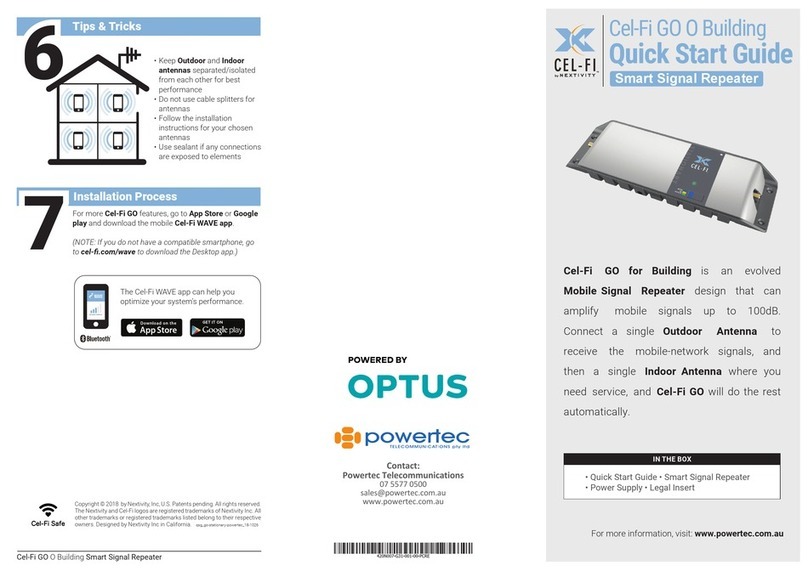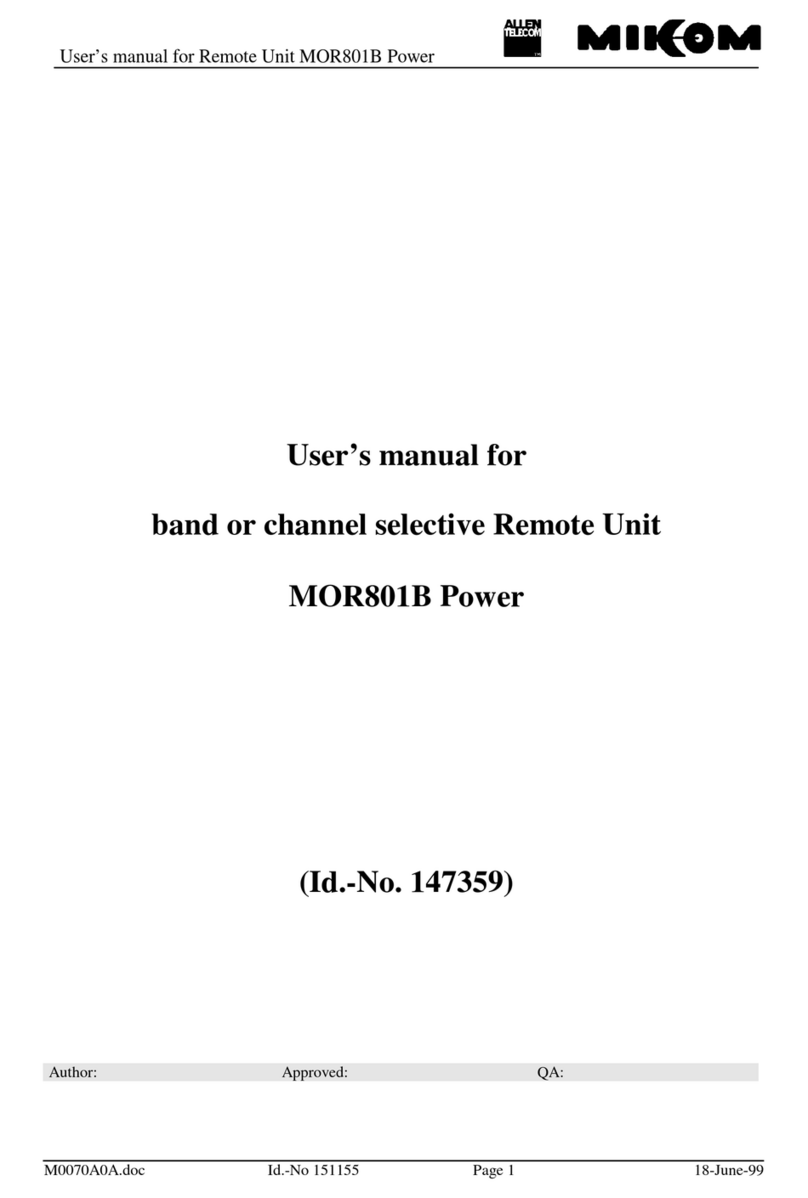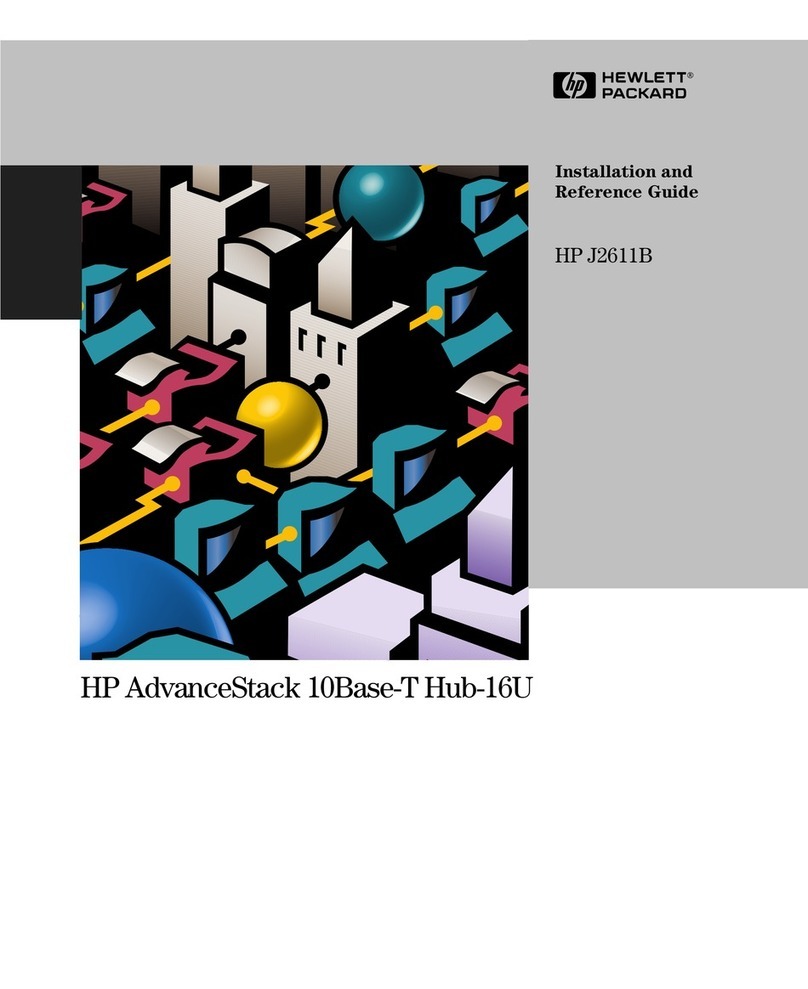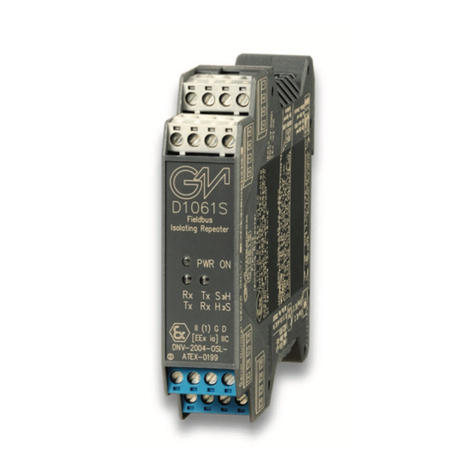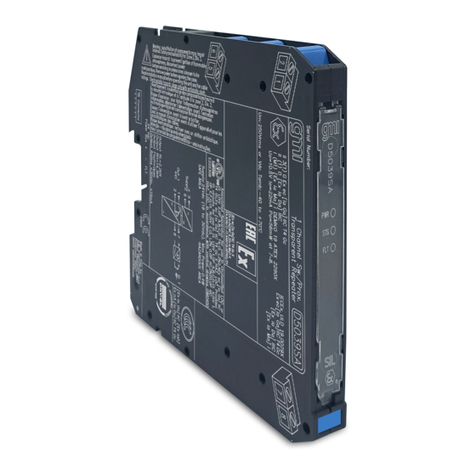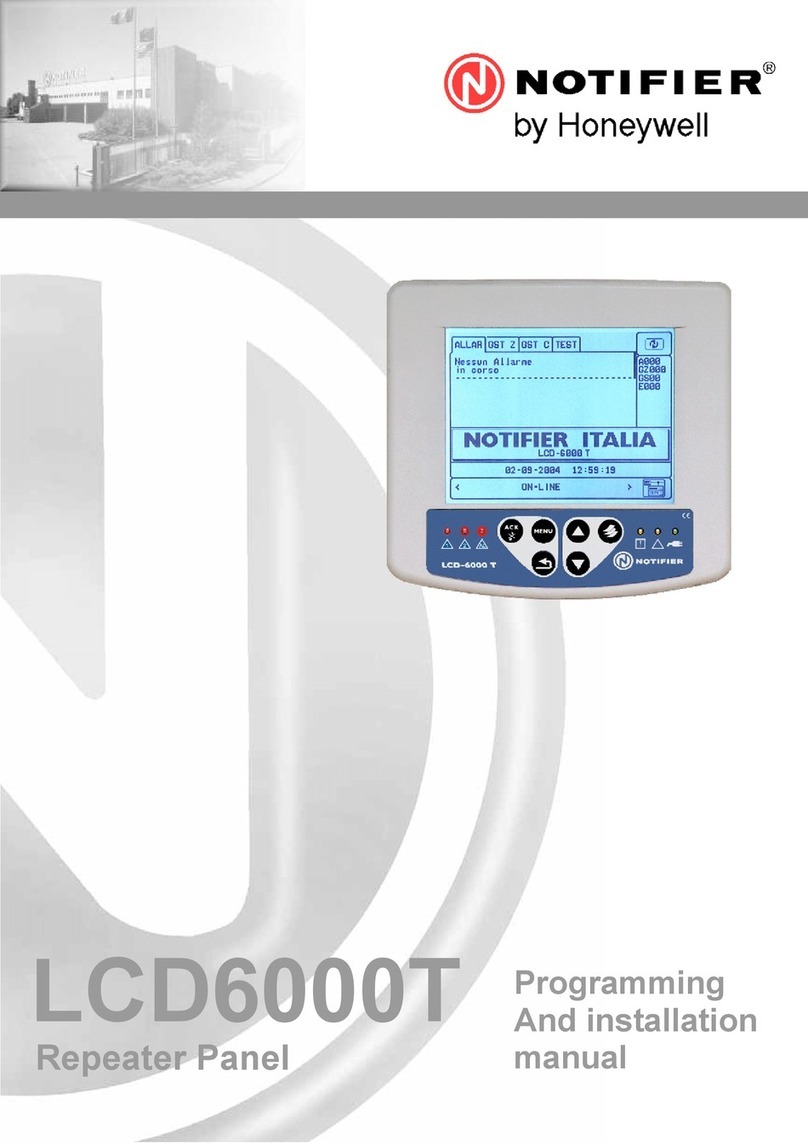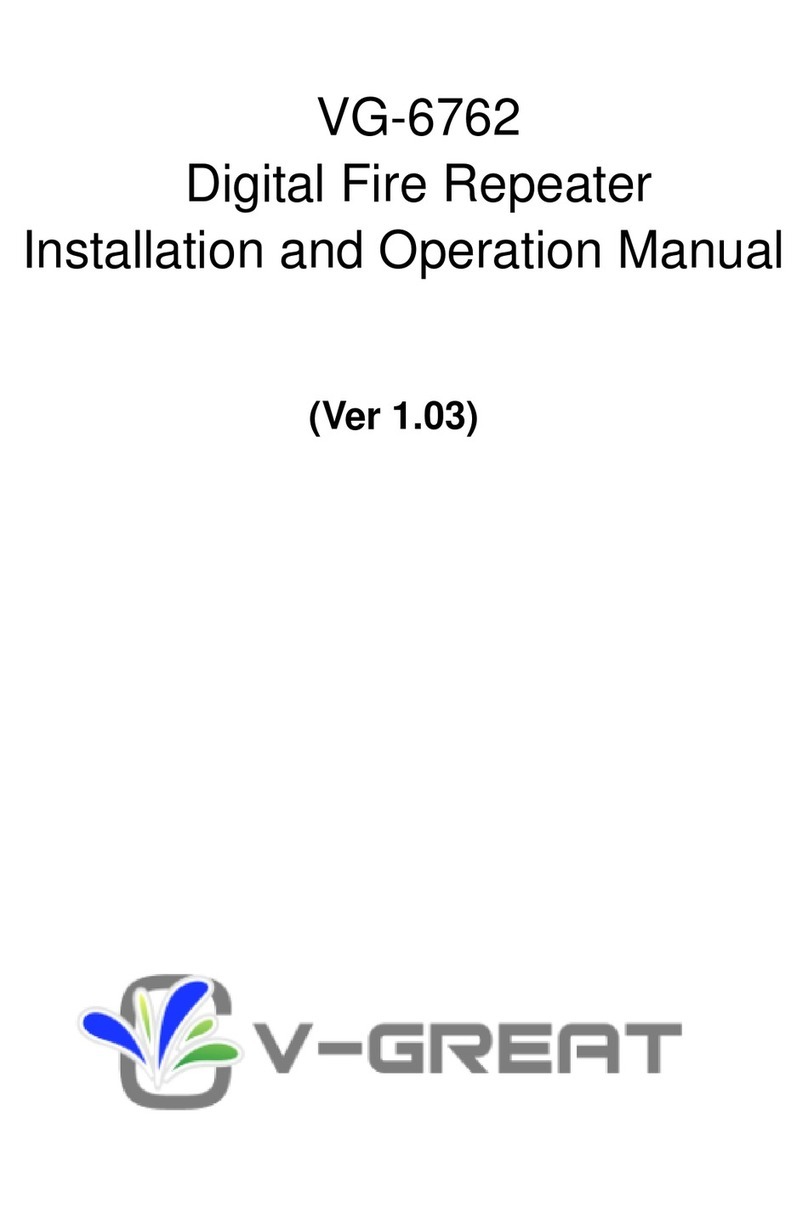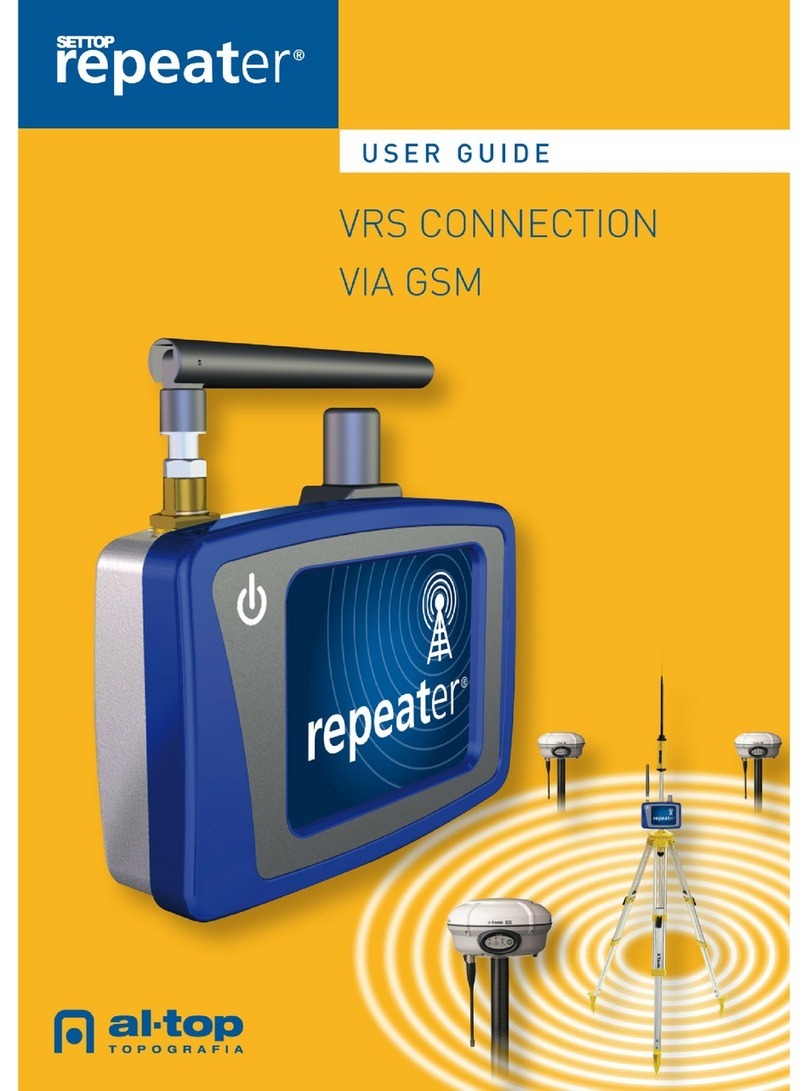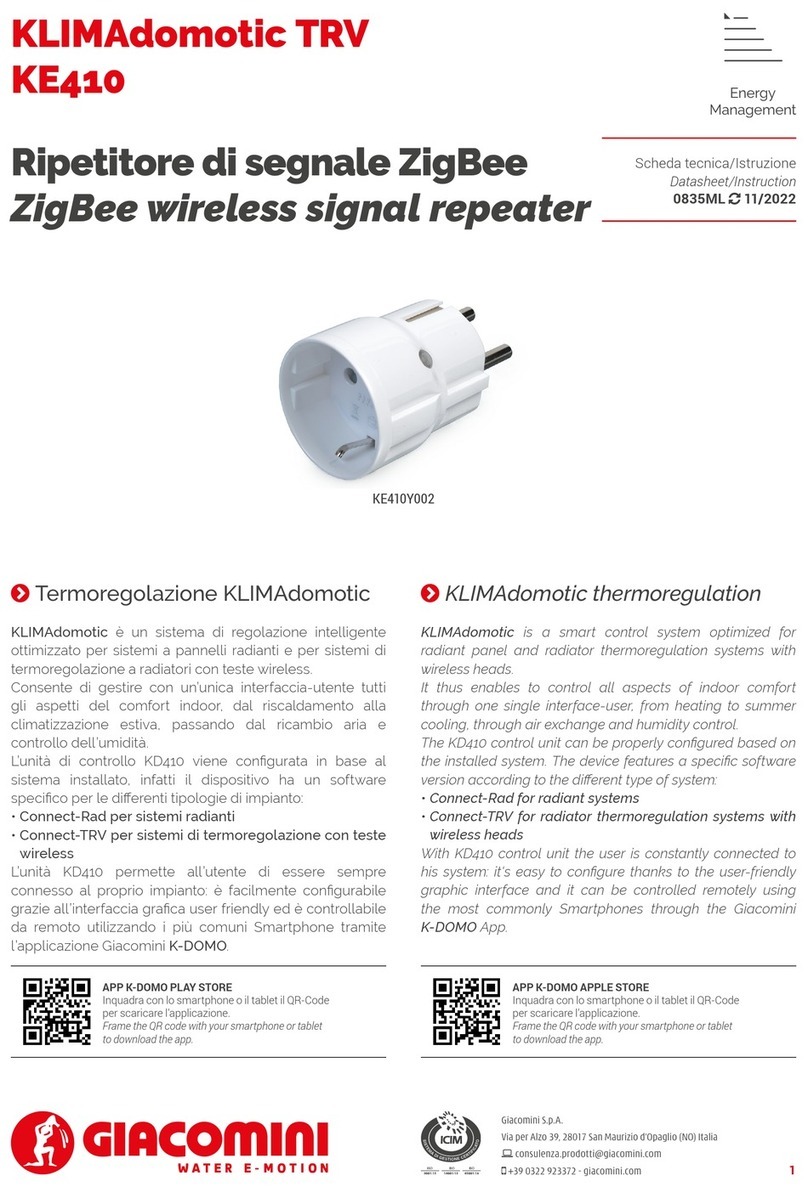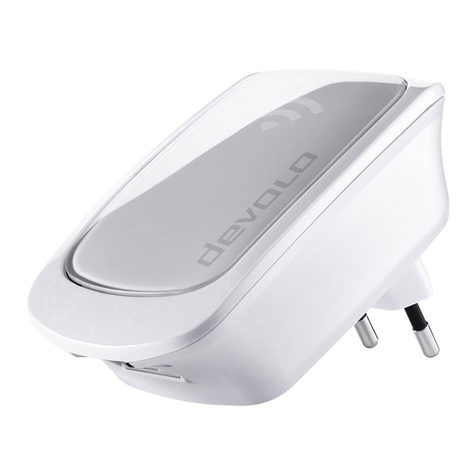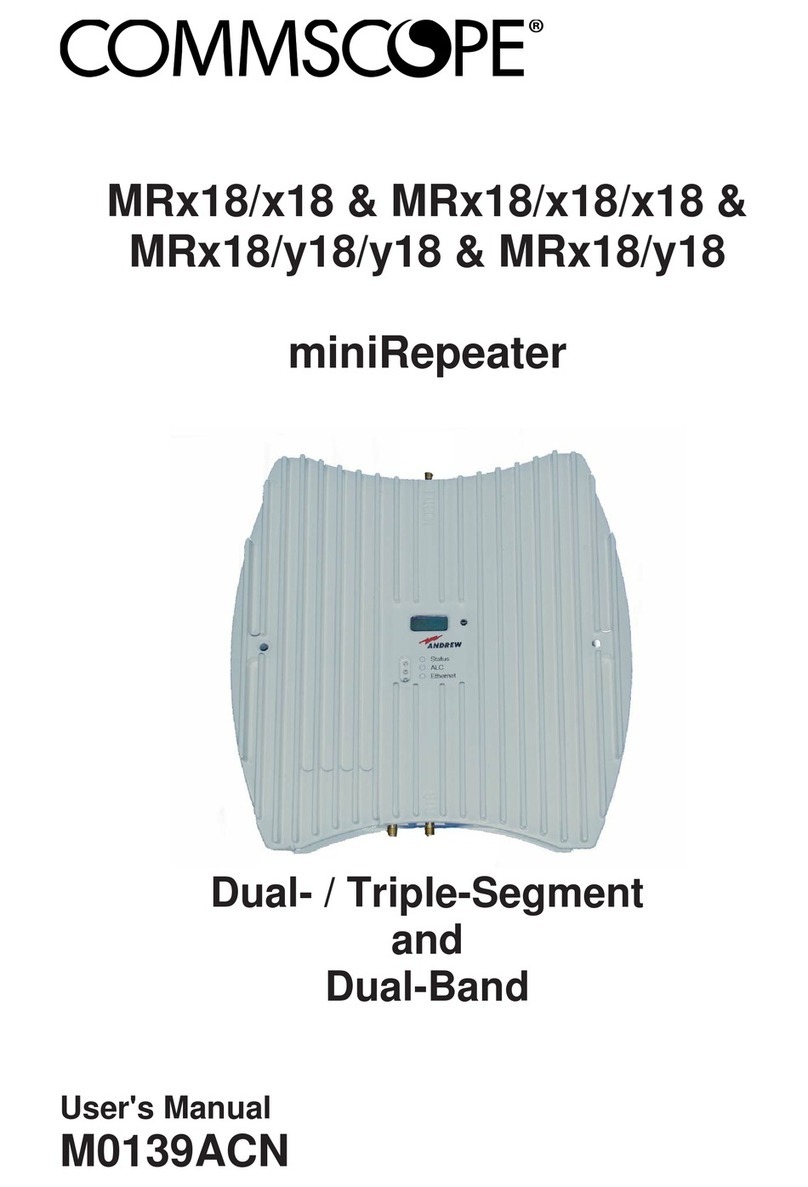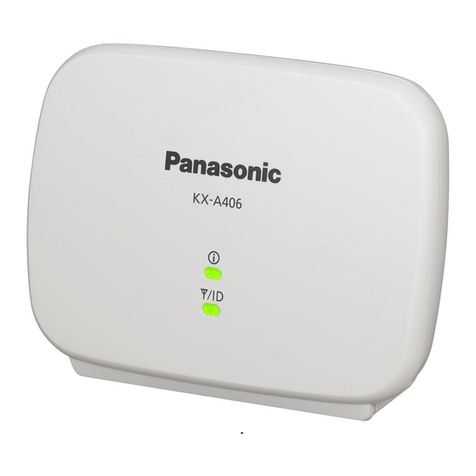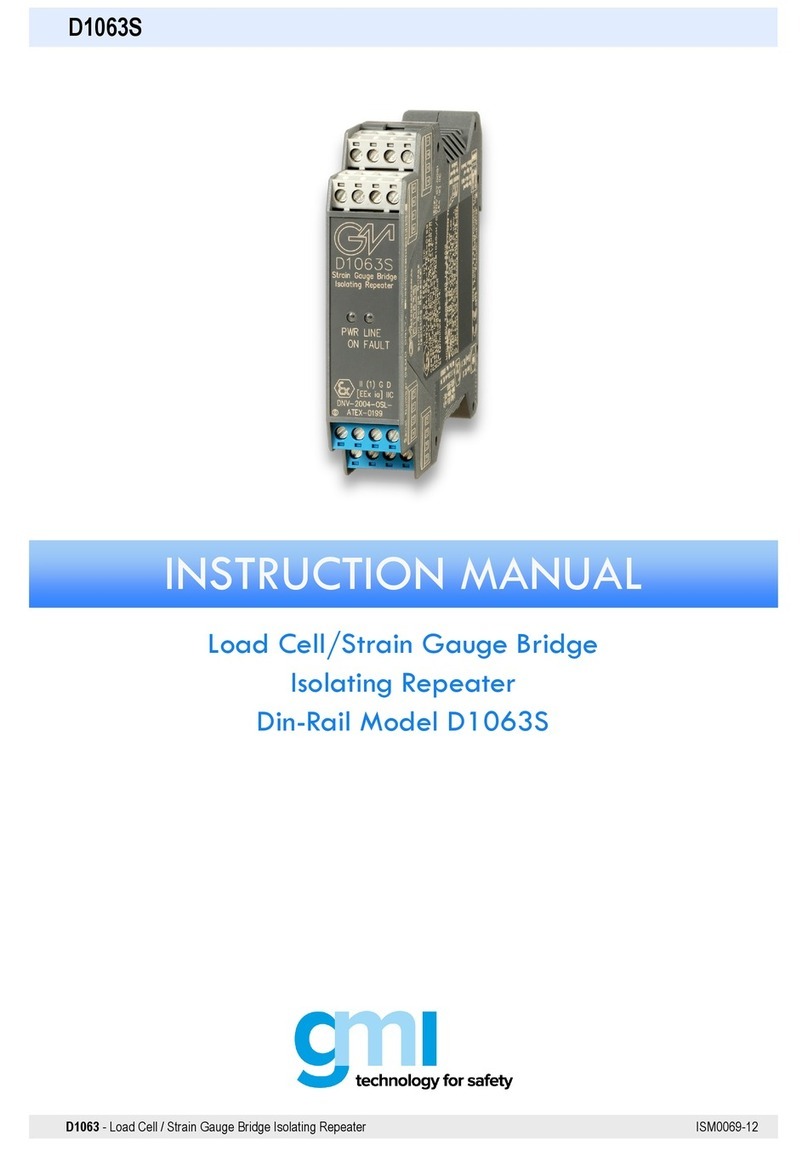Gorke Electronic RTS-100 Installation instructions

43-200 Pszczyna, ul. Staromiejska 31b
tel. 032 326 30 70, fax 032 447 73 30
www.gorke.com.pl,e-mail: [email protected]
SPECIFICATION AND USER’s MANUAL
type of the device: RTS-100 repeater
TECHNICAL PARAMETERS
•class: C
•frequency: 433,92 MHz
•radio transmission: Keeloq hopping code by Microchip
Technology
•type of receiving module: superreaction
•sensitivity: -100 dBm
•sending power: <10mW
•memory capacity: 500
•power consumption:
in the reception mode: max 26 mA
in the sending mode: max 45 mA
•capacity:
sabotage output: 50mA/ 12 V DC
•operating mode: immediate or delay (0,2-10s)
•emission time: 1s
•bandwidth: +/-280kHz
•security level: IP 67
•operating temperature range: 0 to +40 °C
•antenna socket: independent, BNC 50 Ohm
•dimensions (mm): 130*80*35
•cooperation: any GE sender
•operating range: 1000
•sending: 400-1000*
•reception: 200-1000**
•colour: grey
*,** the range depends on the type of the receiver or sender
TABLE OF RANGE
200 metres types of the remote controls: PUK 101, PUK 102, PUK 104, PUK 112-1, PUK 112-2
400 metres PNH 201 hermetic button
600 metres PUK 303 remote control
1000 metres types of the remote controls: RNB 101, RNB 101S, and NRP 100 stationary sender
The above range concerns the open space (without any obstacles, when the receiver and the remote
control can “see each other”). If there are any obstacles between the receiver and the sender, one must
assume that the range would be reduced for:
wood and plaster it would be 5-20% lower, bricks 20-40% lower, and reinforced concrete 40-80% lower.
If there are many obstacles we advise to use retransmitters or stronger remote controls. If there are
metal obstacles, using the radio systems is not recommended.
The device meets the requirements of the directive EMC 89/ 336/ EEC and
RTTE 1999/ 5/ EC.
Gorke Electronic
SPECIFICATION AND USER’s MANUAL: repeater RTS 100 page: 1

USER'S MANUAL
The purpose of the elements:
•BNC antenna socket – is used to connect 434 MHz/50 Ohm antennas
•OPERATING MODE switch – defines the operating mode (with or without delay)
•OPERATING STATE – signal the operating state of the device: CORRECT CODE, LEARNING,
EMISSION, RECEPTION
•LEARNING button – launches the learning procedures
•SABOTAGE button – allows for connecting the device to an anti-sabotage line
The receiver installation conditions - good. Firstly, the hermetic case allows for installing the receiver
in difficult conditions such as humidity or low temperatures. It can work outside. Secondly, the
superheterodyne receiving module is characterized by high resistance to electromagnetic interferences. In
practice it means that the operating range is extended and the influence of interferences on the receiver’s
work is minimized.
The transmission code - the radio transmission, based on the hopping code (KeeLoq by Microchip
Technology Inc. USA) ensures the high safety of using. Each transmission is different from the previous
one. To make the receiver work, you must enter a remote control into its memory – it is the basic
condition. The control can be programmed to unlimited number of receivers. „Loosing” 15 successive
transmissions (using the remote control beyond the receiver's range) requires sending the signal twice
(press the remote control button twice).
Use:
-extending the operating range of radio devices
-reducing the costs in installations for many users with necessity of sending signal in a significant
distance (several hundred metres). Here, instead of using remote controls of long range, you can
use cheaper control, for example the PUK type
-as a radio link relay station – sending information from a distant object to several receivers
Frequency - the device works on the frequency 433,92 MHz. In majority of the European Union countries
(including Poland) this bandwidth does not require any special permissions and concessions for using it.
Gorke Electronic
SPECIFICATION AND USER’s MANUAL: repeater RTS 100 page: 2

1. FUNCTIONING DESCRIPTION
After connecting the supply, the diode RECEPTION lights. It indicates that the receiver is ready to operate.
With each correctly received transmission the diode fades for a moment. When it pulses, it indicates the
incoming transmissions. If you want the retransmitter to send the received signals, you need to program
it – to enter to its memory the codes of these senders which are supposed to be retransmitted. When
using multi-button remote controls, you need to program each button separately. We applied such
solution because in some uses it is not advisable to send signals from all the control's buttons. Each
remote control button which is entered in the retransmitter is treated as a separate sender and occupies
one slot in the memory. The memory capacity is 500 codes.
Only those signals are retransmitted which come from a sender entered to RTS 100 memory. It
cooperates with all types of senders by GE and some of the senders by other producers.
2. PROGRAMMING A NEW SENDER TO THE RETRANSMITTER'S MEMORY
To program a given sender or remote control to the retransmitter's memory:
1. press the LEARNING button shortly – the LEARNING and RECEPTION diodes will light. The
retransmitter is waiting to get the signal from the remote control
2. press the remote control button which is supposed to be entered into the retransmitter's memory.
After sending one signal from the control, the diode CORRECT CODE will light and the LEARNING diode
will start to pulse. Press the control button once more. If the transmission is correctly received, all the
diodes will light which confirms programming of the remote control.
Repeat the programming for all the buttons in the remote control and next remote controls. Programming
stationary senders is the same as the description in the manual; the only difference is that instead of
pressing the control button, activate the sender to a short emission. The applied solution of individual
programming buttons of a multi-button control allows for deciding which signals are supposed to be
amplified.
3. DELETING SENDERS FROM THE MEMORY
To delete the remote controls' codes from the retransmitter's memory, press the LEARNING button and
keep it pressed until all diodes light – then, release the LEARNING button. The diodes will light for about
3s and then will fade which confirms the deletion. IMPORTANT! Remember that the deletion concerns the
whole content of memory. If you want to delete only one or several remote controls, after the deletion
process you must re-enter to the memory those controls which are supposed to be saved. Deleting the
senders does not change the operating mode. Disconnecting the supply does not cause losing information
about the entered remote controls and the operating mode of the retransmitter.
If the retransmitter is in the the reception mode, then after receiving a correct transmission from a
programmed remote control it will react by lighting the CORRECT CODE diode and then the EMISSION
diode which confirms the receiver's work. After sending the received information, RTS moves to the
reception mode.
4. THE OPERATING MODES
You can choose the RTS 100 retransmitter's operating mode:
1. the immediate mode – after receiving a signal RTS 100 sends the received information
2. the delay mode – the transmitter starts sending with a random delay from the scope 0,2-2 s. This
mode is used in order to avoid collisions of operations of several retransmitters in the same area. RTS
100 compares every received transmission with the 3 last transmitted ones and does not allow for
repetitions and creation of a radio loop.
DELAY switch allows you to choose the sender's operating mode:
– without switch – after receiving a signal from the remote control the retransmitter starts sending
immediately
– with switch – after receiving a signal from the remote control, the retransmitter waits for 0,2-2s and
starts sending
– the delay is set randomly for each transmission
– the delay operating mode is useful when there are several retransmitters operating on the same area
Gorke Electronic
SPECIFICATION AND USER’s MANUAL: repeater RTS 100 page: 3
Table of contents
